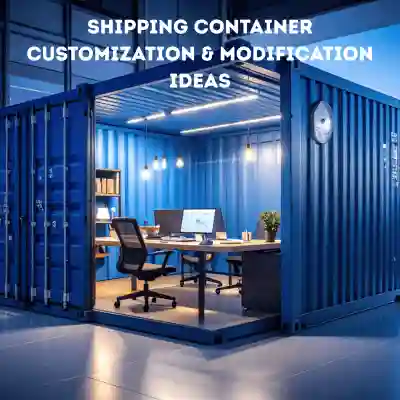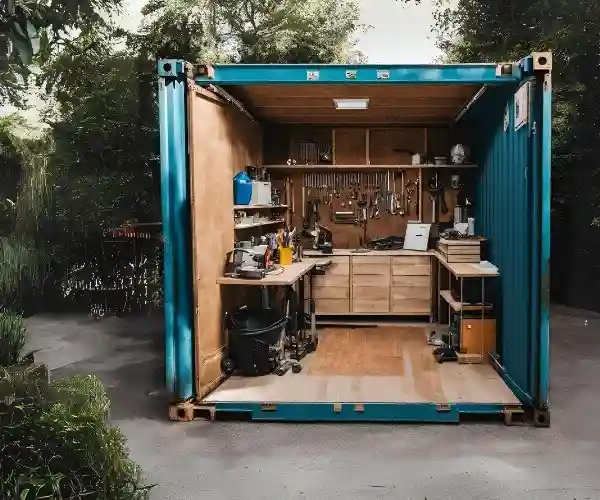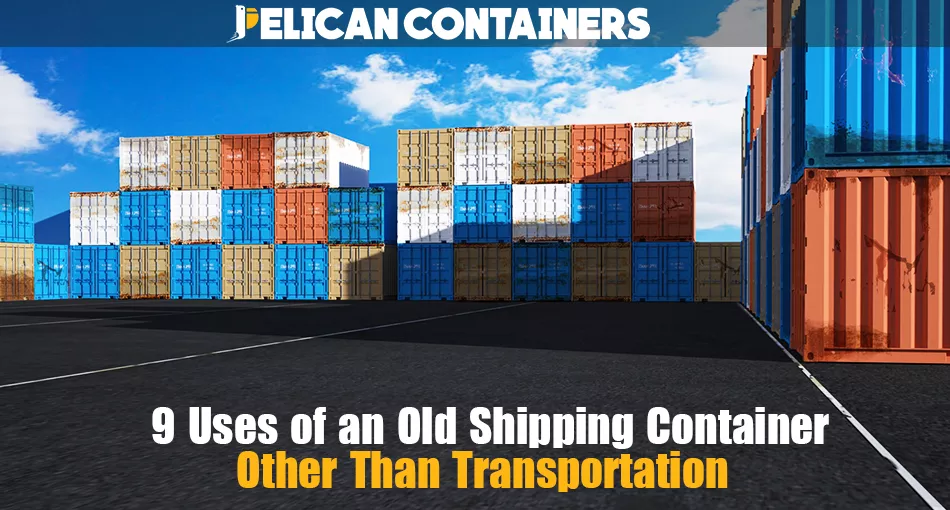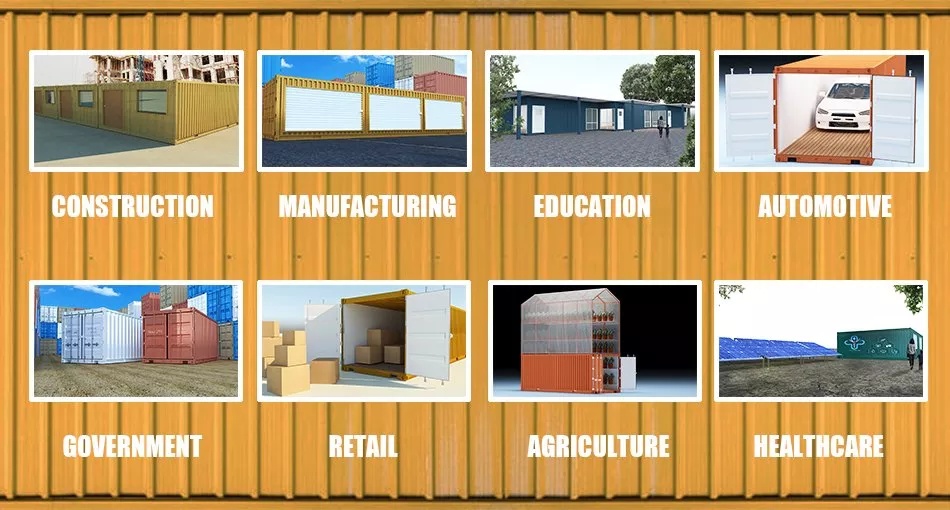What is Transshipment? Complete guide [+lease containers]
![What is Transshipment? Complete guide [+lease containers] - image №29](https://pelicancontainers.com/wp-content/uploads/2022/08/1659647944410_.jpg.webp)
Global shipping is not simple. It’s rather an intricate web of processes designed to make goods get to their destination across vast distances. One system to control these processes is transshipment. While this word may not be the first to come to mind when people talk about international trade, transshipment is an important entity that fills the gaps in the global supply chain, connecting remote ports and optimizing shipping routes.
Let’s talk about how goods successfully make their way to places without direct shipping routes, and how some smaller ports stay connected even when not being able to accept bigger ships.
![What is Transshipment? Complete guide [+lease containers] - image №30](https://pelicancontainers.com/wp-content/uploads/2025/04/1A7C5X2.jpg)
What is transshipment?
When cargo is transferred from one vessel to another at an intermediate port before reaching its final destination, it’s called transshipment. This is especially useful for companies that deal with specialized containers, like open side shipping containers, which need easy side access when being transferred.
It usually happens when a direct shipping route isn’t available, practical, or cost-effective. Instead of one long trip, goods are sent to a hub, where they’re sorted and reloaded onto a different ship for the next leg of the journey. This system makes sure cargo can reach destinations that aren’t directly accessible by large shipping lines.
Unlike simple cargo transportation, which might just mean unloading and reloading at the same port, transshipment is a carefully planned process that involves coordination between different shipping companies, port authorities, and logistics providers.
What are the reasons for transshipment?
Transshipment has become a valuable option in global shipping due to several factors:
- No direct routes. Many ports are not developed for direct shipping connections with major trade hubs, or they are simply too small. Transhipment helps in such cases because it enables cargo to be rerouted through a larger hub before continuing its journey.
- Saving money. Direct shipping may take its toll on the budget, especially when transporting small cargo to distant locations. Utilizing transhipment hubs allows a shipping company to consolidate cargo. For example, if a company uses 20ft shipping containers, their shipments can be combined to reduce costs. Leasing containers can further reduce capital expenses, offering flexibility without large upfront investments.
- Size incompatibility. Large cargo ships can’t dock at any port. Some ports just don’t have the depth or infrastructure to accommodate them. Transshipment hubs solve this by transferring cargo to smaller feeder vessels that can reach those ports.
- Efficient fleet use. Shipping companies operate fleets based on demand. Transshipment helps them keep their vessels on optimal routes, avoiding unnecessary detours and ensuring resources are allocated where they’re most needed.
- Navigating regulations. In some cases, goods require customs clearance, inspections, or repackaging before they can continue their journey. Transshipment hubs are equipped with the facilities to handle these processes to comply with local regulations.
The benefits of transshipment reach beyond logistics; it also concerns the resiliency of global supply chains. Shipping companies can avoid major disruptions (caused by weather, political events, etc.) by engaging multiple hubs and alternative routes. Moreover, such hubs lead to innovations, incorporating automation and sustainability to keep global trade flowing smoothly.
![What is Transshipment? Complete guide [+lease containers] - image №31](https://pelicancontainers.com/wp-content/uploads/2025/04/1A7C45S.jpg)
Top 5 Busiest transshipment ports in the world
The efficiency of global trade relies on a few strategically located transshipment hubs. These ports handle massive volumes of container traffic and serve as critical connection points in the world’s supply chains.
- Singapore. Singapore is often considered the crown jewel of transshipment ports. Strategically located at the crossroads of Asia-Pacific trade routes, its port handles millions of containers each year. Its infrastructure is built to accommodate quick container transfer between vessels, and it serves as a go-to hub for Asia.
- Port of Hong Kong. Despite recent competition and political changes, Hong Kong remains a major player. Its location makes it vital for southern China’s exports and imports, and its port system is tailored for massive cargo redistribution.
- Port Klang, Malaysia. This one has been rising fast. A major transshipment hub for Southeast Asia, it pulls in cargo headed to regional ports. The port’s flexibility and cost-effectiveness give it an edge for containers that don’t need to go directly to their end destination right away.
- Dubai (Jebel Ali Port). The Middle East’s busiest port, Jebel Ali, acts as a conduit for cargo headed to Africa, South Asia, and even Europe. It’s modern, vast, and operates like a global cargo relay station.
- Rotterdam, Netherlands. Europe’s largest port. Rotterdam’s deepwater access and inland connections make it ideal for transshipment in and out of continental Europe. Many containers get offloaded here before being sent by barge or rail to other EU countries.
Many perishable goods passing through these hubs require specialized storage, making it essential for companies to buy 20ft reefer shipping containers to maintain product quality. These ports remain critical not only due to their locations but also because of their investment in infrastructure, automation, and logistics technology. The success of transshipment depends on efficiency, and these hubs set the global standard.
Direct shipment vs. transshipment
Direct shipment means the cargo moves from its origin to its destination without switching vessels or transport modes. Simple, fast, but often more expensive and less flexible. This works best when both the origin and destination ports are big enough to accommodate large vessels and when there’s enough cargo volume to justify a direct route.
Transshipment, on the other hand, introduces an extra step. The container or shipment is offloaded at a port, stored temporarily, and then loaded onto a different vessel. This might add a day or more in transit, depending on the port’s traffic. It can reduce overall shipping costs when done strategically. For instance, shipping multiple containers to a central hub on a large vessel is often cheaper than sending individual shipments on direct routes. It’s a classic quantity vs. convenience tradeoff.
Transshipment also allows shippers to combine different cargo types. You might see shipping containers getting shifted in a port before being loaded with other mixed-use cargo units bound for another regional location.
For large-scale shipments of temperature-sensitive products, businesses often buy 40ft reefer shipping containers to ensure optimal conditions throughout the journey.
![What is Transshipment? Complete guide [+lease containers] - image №32](https://pelicancontainers.com/wp-content/uploads/2025/04/1A7CXUG.jpg)
Transshipment vs. transloading
Although they sound similar, transshipment and transloading are different parts of the shipping and logistics process. Transshipment is cargo moving from one vessel to another during sea transport. The container stays the same. It might be transferred at a hub like Singapore and carried onward by another ship, but the goods stay inside the original container.
Transloading is when the goods are physically removed from one container or truck and placed into another. It usually happens at a warehouse or transfer point. For example, bulk goods might arrive in a container, get broken down, and then be re-packed into smaller trucks, or 40ft high cube shipping containers might be offloaded and redistributed into domestic trailers for inland delivery. It involves more handling, which increases the risk of damage but allows for cargo consolidation or customization per region.
How to track transshipments?
A combination of various means is needed to track transhipment, including shipping line updates, port data, and digital tracking technologies. Tracking transhipment in real-time is important because cargo doesn’t remain on the same vessel during the whole trip like in direct shipment. Let’s see how you can track the journey of your goods during transhipment:
- Special tracking instruments. Shipping companies usually provide tracking instruments so you can monitor the status of your goods as they move between ports. These systems update automatically when cargo is transferred at a hub.
- Port and terminal updates. Many large ports offer real-time tracking for containers passing through their facilities. This data helps shippers confirm when cargo has arrived, been offloaded, and been transferred onto another vessel.
- Bill of Lading and customs records. Documentation plays a crucial role in tracking transshipments. The bill of lading provides details on cargo transportation, while customs databases often record when shipments enter and exit specific locations.
- Third-party logistics (3PL) platforms. Many businesses use logistics providers that integrate data from multiple shipping sources, offering a consolidated view of cargo movement across the world.
Effective tracking ensures transparency and minimizes the risks associated with delays, misrouting, or unexpected complications in the transshipment process.
Transshipment is not just a workaround for logistical constraints — it is a fundamental component of modern shipping. From the world’s busiest ports to advanced tracking technologies, transshipment ensures that cargo moves efficiently, even across the most complex routes. While direct shipment may seem ideal, the reality of global trade demands a more dynamic system. Transshipment is a key strategy for optimizing global supply chains, regardless of whether the containers the goods are traveling in are company-owned or acquired through leasing.
Vanessa is a dedicated writer and content enthusiast at Pelican Containers. With a background in practical writing and a keen eye for clarity, she transforms complex container topics into easy-to-understand and useful content. Her passion lies in exploring the evolving world of container usage — from smart storage hacks to global logistics trends.
When she's not writing, Vanessa loves discovering creative shipping container projects or traveling to find new inspiration.
Explore thoughtful, informative, and accessible content with Vanessa!
Vanessa is a dedicated writer and content enthusiast at Pelican Containers. With a background in practical writing and a keen eye for clarity, she transforms complex container topics into easy-to-understand and useful content. Her passion lies in exploring the evolving world of container usage — from smart storage hacks to global logistics trends.
When she's not writing, Vanessa loves discovering creative shipping container projects or traveling to find new inspiration.
Explore thoughtful, informative, and accessible content with Vanessa!
FAQ
What is the meaning of transshipment?
Transshipment means transferring goods from one vessel to another during the shipment process.
What are the reasons for transshipment?
Transshipment relieves logistics in several ways, including using different transport modes, bypassing trade restrictions, and consolidating cargo for efficiency.
What is an example of a transshipment?
Imagine a large container ship making its way from Europe to Southeast Asia. Rather than trying to dock at every port along the way, it makes a stop in Singapore, a major transshipment hub. There, the cargo is offloaded and transferred to smaller feeder vessels that can carry it to destinations like Malaysia or Indonesia. Such an approach saves time and makes sure that even remote locations or ports not designed to accept larger ships get their goods.
What is the difference between transshipment and shipment?
It’s easy to confuse the two, but there’s a key difference. A shipment is the overall process of moving goods from one place to another. This could be by land, sea, or air, often using a single mode of transport. Transshipment, however, is a specific part of that process because it concerns unloading goods from one vessel at an intermediate port and transferring them onto another vessel.
How long does transshipment take?
The duration of transshipment varies, ranging from a few hours to a few days, depending on numerous factors, such as the efficiency of the port and cargo type, to name a few. It is worth mentioning that many modern transhipment hubs are designed to make this downtime as short as possible.


![10-1 What is Transshipment? Complete guide [+lease containers] - image №41](https://pelicancontainers.com/wp-content/uploads/2024/08/10-1.jpg.webp)
![8-1 What is Transshipment? Complete guide [+lease containers] - image №42](https://pelicancontainers.com/wp-content/uploads/2024/08/8-1.jpg.webp)

![5-1 What is Transshipment? Complete guide [+lease containers] - image №44](https://pelicancontainers.com/wp-content/uploads/2024/08/5-1.jpg.webp)
![4-1 What is Transshipment? Complete guide [+lease containers] - image №45](https://pelicancontainers.com/wp-content/uploads/2024/08/4-1.jpg.webp)
![2-1 What is Transshipment? Complete guide [+lease containers] - image №46](https://pelicancontainers.com/wp-content/uploads/2024/08/2-1.jpg.webp)



